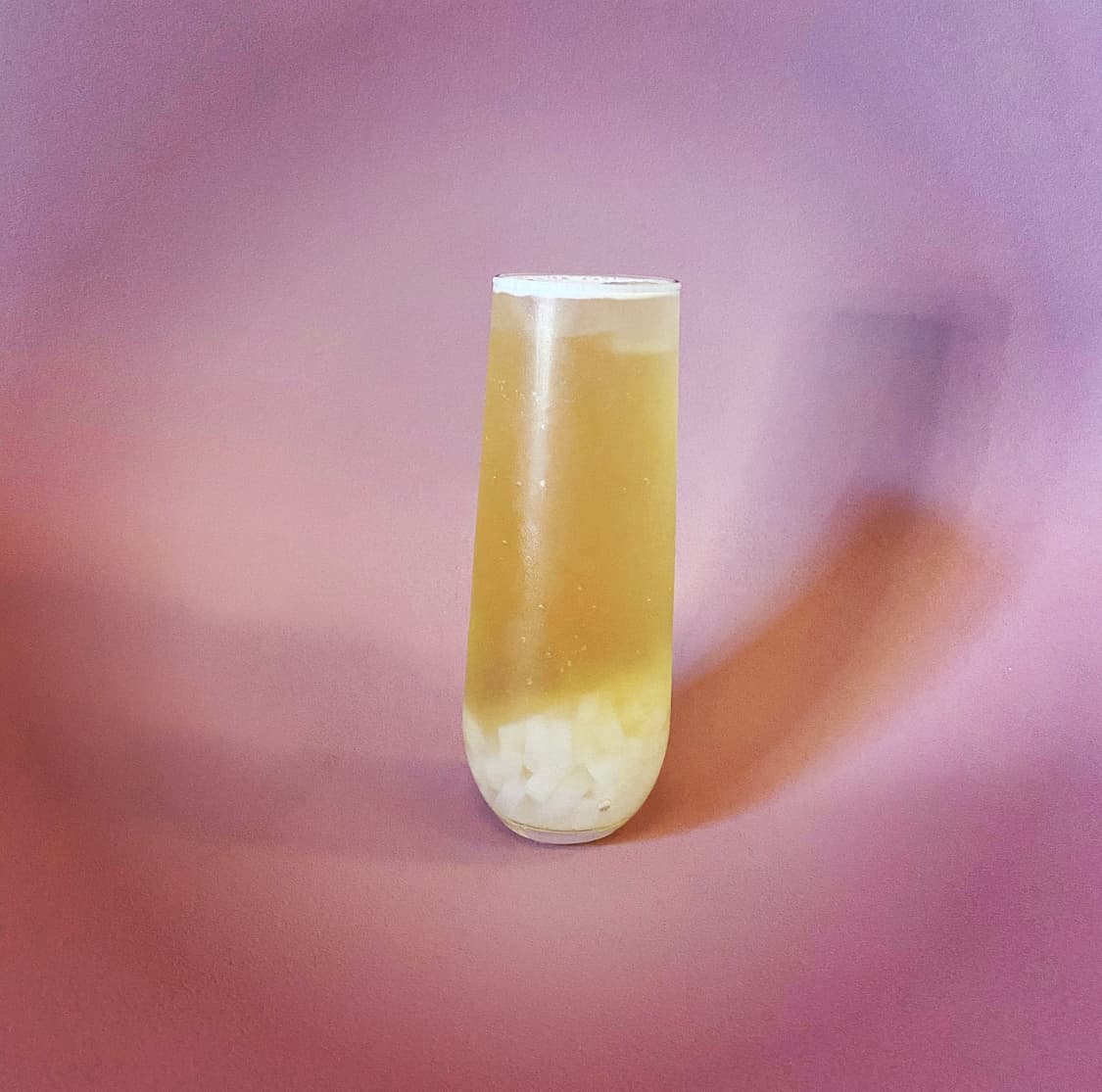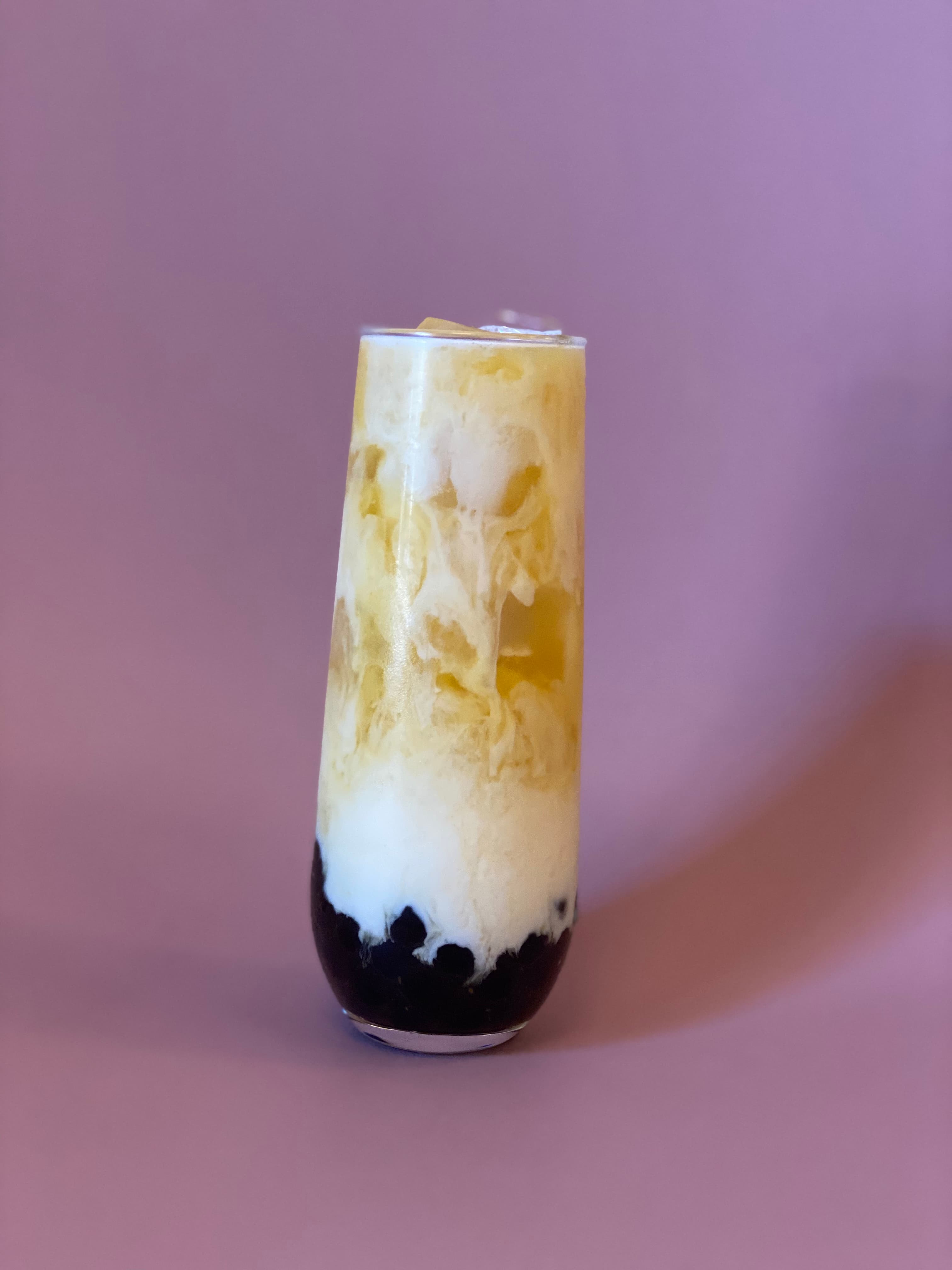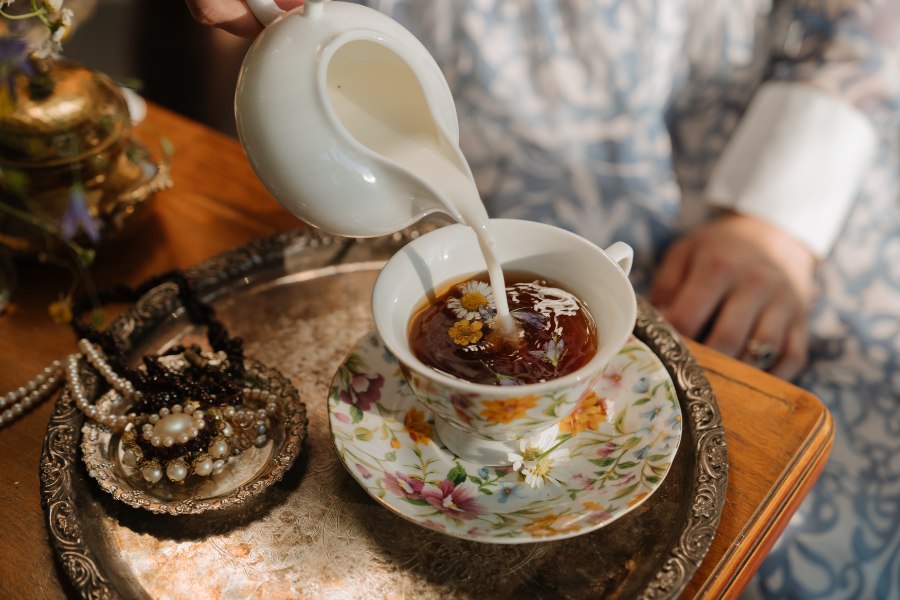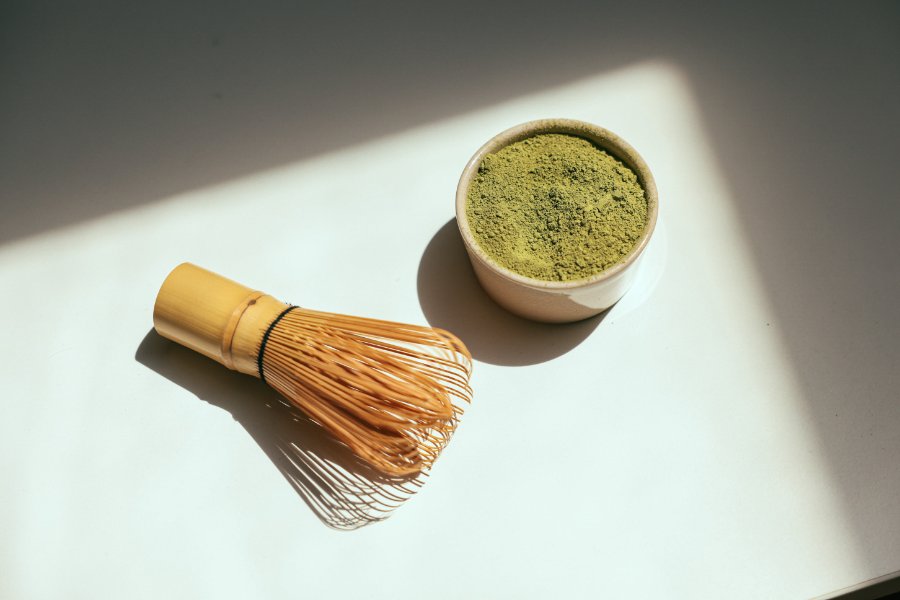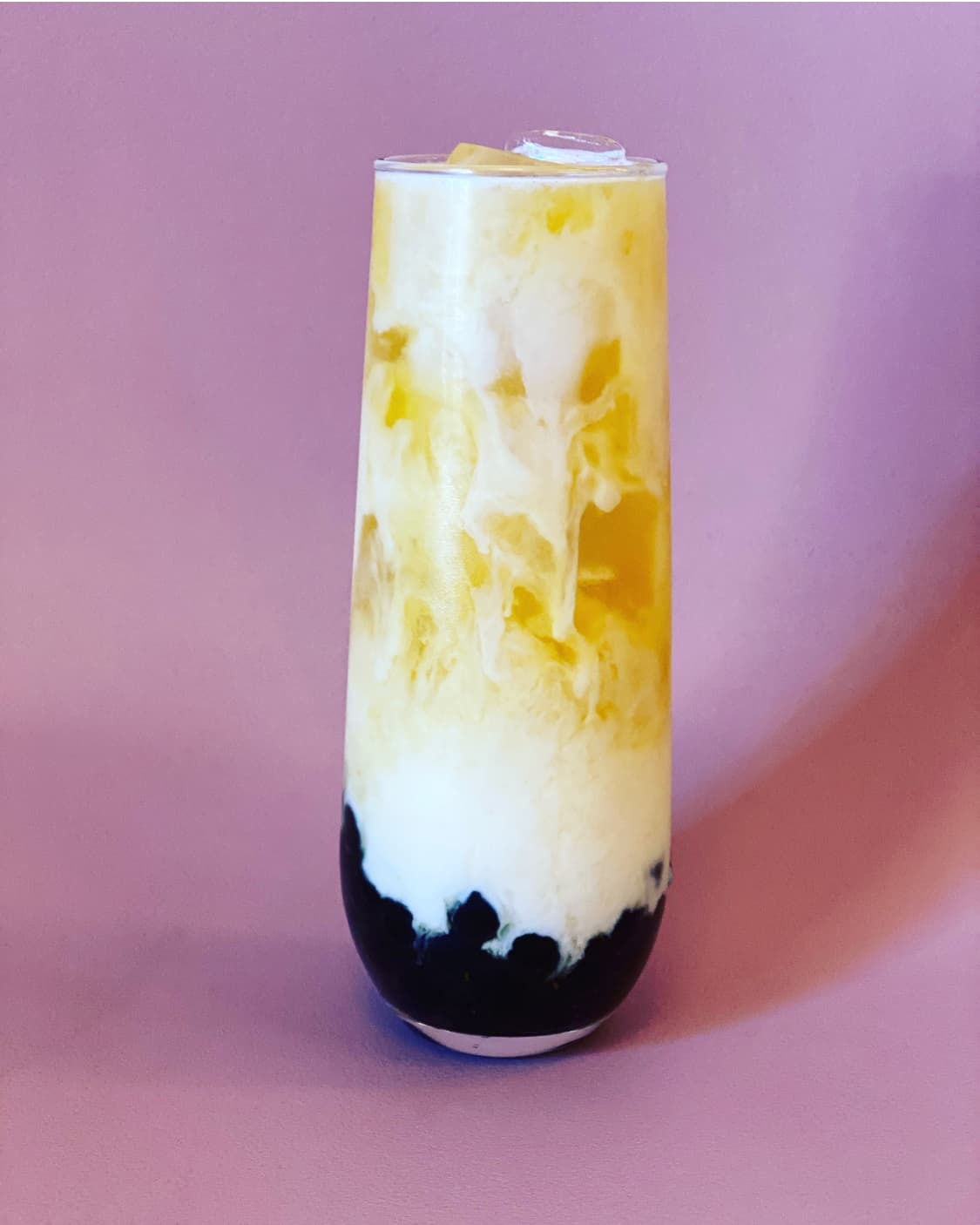
15 October, 2020 | Bon Tea Cafe Updated 2021
How Oolong Milk Tea is Different than Any Other Drinks
Oolong tea is usually on the menus of many fancy tea shops. However, most of us hesitate to order this weird-sounding drink and know little to no information about it. In this guide, we dive into the exciting insights about the Oolong tea and explain what makes it a unique drink. Once you get familiar with the tea type, we will share delicious different Oolong milk tea recipes. If you decide to give it a try, you can also visit our cafe in Los Angeles for the properly prepared oolong tea that will leave a nutty aftertaste for a long time.
Oolong Tea
Oolong tea is different from most of the other tea types people know. It is neither black nor green tea; instead, oolong tea falls in between these two categories. Yet, while processing the tea leaves, depending on the producers' preference, the tea can be more inclined to black tea characteristics or green- matcha tea flavor.
Black tea is produced by letting the green leaves of the tea oxidize completely. Once oxidized, the leaves become dark-colored and get a rich aroma. In contrast, green tea is not oxidized or oxidized in a little amount. Therefore, the leaves keep their fresh green color and earthy flavor. As mentioned, Oolong tea can be considered as both green and black tea. Producers oxidize leaves between 8-80% to get the oolong tea. Again, it depends on the choice of the producer to decide how much to oxidize. Therefore, oolong tea from various vendors can seem, smell, and taste differently.
The difference between regular black or green tea and oolong is not only in the flavor and aroma. Their shapes are also dissimilar. Oolong leaves are usually rolled, twisted, or curled into small balls or thin strands. Like oxidation, the shape and the time when the leaves are shaped have a huge effect on the final product. For all these factors mattering in the production of oolong tea, its flavor portfolio is extensive.
The Story of Oolong Tea
Oolong milk tea flavor varies highly depending on where the leaves were grown and how they were processed. Originally, the tea belongs to China and Taiwan, which consume the tea more than any other country.
There exist a variety of stories for origination. One of the claims is that the tea's name comes from "Wulong (black dragon)" in Chinese. When the tea is heavily oxidized, its color becomes darker. Plus, the twisted shape of the leaves looks like a mystical dragon. Another story tells that a farmer discovered this type of tea by accident. As the farmer was busy, he forgot about the leaves, and they started to oxidize. The farmer was also called Wu Liang, who gave the name to the tea.
In China, this tea grows in the mountains during cool weather. It is highly oxidized while in Taiwan, the oxidation level is lower, between 10-40%. Therefore, tea leaves from Taiwan have a lighter color. Though China and Taiwan are known as the originating countries, the tea also grows in India, Japan, New Zealand, etc.
How to Differentiate Oolong?
Oolong flavors can be light/floral and dark/chocolate-like. What defines the aroma is the oxidation and roasting level. Roasting is a method to increase the shelf life of this tea. As the leaves travel a long way from East to West to be in your Oolong milk tea, they must keep freshness. Besides, roasting adds extra flavor and balances the fruity-floral flavor with dark scents.
Light Oolong
The first member of the sophisticated oolong family looks very similar to green tea leaves. However, its color is between green and black. Even the green parts of the leaves are usually darker than the green tea leaves. This oolong tea can be in various forms- twisted, rolled, ball-shaped, etc. As the oxidation level is low, the tea tastes much like green tea with earthy, fresh, light, and vegetal aroma. A little kick of oxidation also brings buttery, rich flavor to the tea to differentiate it from your regular green tea drinks.
If you want to make light oolong milk tea, it is advisable to purchase the leaves sourced from Taiwan. Taiwan is a famous producer of light oolongs because the producers grow the leaves on mountaintops. However, Chinese producers also started to focus on this type. A few decades ago, the popular Tieguanyin variety of oolong tea was associated with dark roasted and highly oxidized leaves. Yet, nowadays, it is possible to find light and unroasted versions of Tieguanyin. This example indicates the shifting focus from dark roasted to light tea of Chinese producers.
Medium Oolong
Increasing the oxidation and roast level of light oolong creates medium tea with warmer notes. Its accents remind me of the taste of honey, sesame, or toasted grains. In this category, Taiwanese producers are still popular, bringing nutty flavor to the tea leaves with controlled roasting. One advantage of medium oolong tea over light versions is its suitability for steeping. Green tea can lose its whole flavor portfolio after a few steps. However, the aroma of medium oolong is much stronger. Hence, even after multiple steeps, its flavor keeps evolving.
There are several ways to produce medium oolong. One interesting method is the concubine technique. The producers make tiny leaf-hopping insects bite the leaves. In this case, the bitten leaves bring the more fruity and sweet flavor. Another popular processing style is called red water. In this case, the oxidation level increases to dark oolong oxidation levels, but the producers roast the leaves at very low temperatures. Hence, the organic tea leaves get a nutty, dark flavor but keep a smoother body than the black tea.
Dark Oolong
If you are looking for a strong and rich aroma in your oolong milk tea, then you can use dark leaves in the preparation. Highly oxidized and roasted leaves taste like an intense coffee. Famous producers of this version of tea are in the Wuyi mountains, China. They grow the tea in cliffs; hence the rocky surface adds distinct, diverse flavors through minerality. Plus, the traditional Tieguanyin growing in Taiwan and China has a caramel-like flavor because of the roasting method. All these different portfolios of flavors can seem confusing; however, it is what makes the oolong tea unique. The tea can taste completely different from the same leaves, thanks to various production methods. In oolong milk tea, all different types of leaves can be used depending on the drinkers' flavor preferences.
Get Oolong Tea Right
It is a shame that oolong milk tea is not as popular as other tea types, while it offers a more diverse and complex flavor with a strong body. Some people prefer to drink it as boba tea, while others do not like the tea's taste. The quality and the flavor of this tea highly depends on the growing conditions. Therefore, it is necessary to purchase premium tea leaves from reliable vendors.
However, what matters more is the way people prepare this tea. Doing something wrong in the brewing process can make even a huge batch of the tea smell and taste like old perfume. When done properly, the oolong milk tea will reveal its complex taste and create a feast in drinkers' mouth. Every sip becomes joyful and much more delicious than other black or green tea when people know how to brew the tea or steep it.
Steeping is the process of adding more water to the same leaves for multiple times. When people try it with a regular English Breakfast tea, what they can get is only pale-brown colored water with no taste after the final steeping. However, oolong tea keeps its bold flavor and even develops it, so drinkers might think it is a completely different type of tea in the final steeping.
Preparation
As the oolong tea has different characteristics, its brewing or steeping times can vary greatly. Hence, it is always advisable to ask the tea vendor about the instructions. However, there also exist some general points about brewing. First, you should boil cold filtered water- preferably, spring water. Once the water temperature hits 180 or 200, you can steep the tea between one to three minutes. Steeping is a necessary step because each time you add extra water, the tea's curls are revealed and bring more flavor. It is common to steep high-quality, organic tea for 3-5 times.
If there are instructions on the package, use them to brew the tea. Otherwise, you can add two grams of tea per eight oz of boiling water. Then cover the cup with a lid to keep the heat inside. You can consume the tea plain or add milk to enjoy delicious oolong milk tea.
Oolong Milk Tea Recipe
One of the most favorite oolong milk tea recipes is very simple to make. First, you need to boil around four cups of water in a medium-sized pot. Then add oolong tea leaves into the water to steep for five minutes. A variety of this recipe also includes jasmine tea, rose tea, or chamomile tea leaves added together with oolong leaves. After steeping, allow the drink to cool.
In a different pot, prepare the brown sugar syrup. It will add sweetness, but you can skip this step if you prefer the drink without added sugar. For the syrup, mix half a cup of sugar and a quarter cup of water. Once the sugar dissolves and the mixture becomes thicker, the syrup is ready. Combine the tea, syrup, and milk to finalize the drink. Before pouring the oolong milk tea into the glass, it is better to drizzle some syrup to the sides. In this way, the drink will look as fancy as its taste. Besides, keep in mind that any milk works great in this recipe, whether almond, oatmeal, soy, or whole milk. You can also add ice cubes to make a refreshing milk tea.
Oolong Tea with Chia Seeds
Bubble tea has become popular in many parts of the world, though it originated in the East. If you are a fan of boba pearls, you might also want to prepare oolong milk tea with boba. It is enough to boil the ready boba pearls and add them to the glass's bottom before pouring the drink. However, a unique twist to this traditional oolong milk tea is making the drink with chia seeds as boba. Some people might not prefer the taste or the size of the boba pearls. In this case, chia seeds are a great alternative, which at the same time brings excitement to regular drinks such as boba pearls.
You can prepare such a drink by mixing one tablespoon of chia seeds with a quarter of cup cooled tea. Stir it and wait for the seeds to bloom. If not all the seeds bloom, add some more tea. Once, seeds are ready, pour the rest of the drink. You can again add brown sugar syrup for extra sweetness. This recipe is a simple, yet delicious twist to the regular oolong milk tea.
Visit Bontea Cafe
We have already explained that the taste and texture of the Oolong tea depend on many factors. The production method, oxidation and roasting level, and preparation style affect the flavor portfolio and bring varying results. Hence, you must prepare the tea properly. Otherwise, you can miss the unique flavor of the oolong tea.
Besides, if you do not want to prepare the tea at home, you can get a cup of Oolong milk tea at Bontea cafe. We ensure the taste of the oolong leaves by sourcing them from organic and reliable tea vendors. Our staff puts much effort into preparation to satisfy the requirements and provide perfect oolong tea every single time. We also offer much flexibility to the customers. Whether you want to decrease the sweetness or add boba pearls to the drink, we can adjust the order to your wishes. Moreover, you can enjoy our fantastic drinks without leaving home by ordering online in LA.


